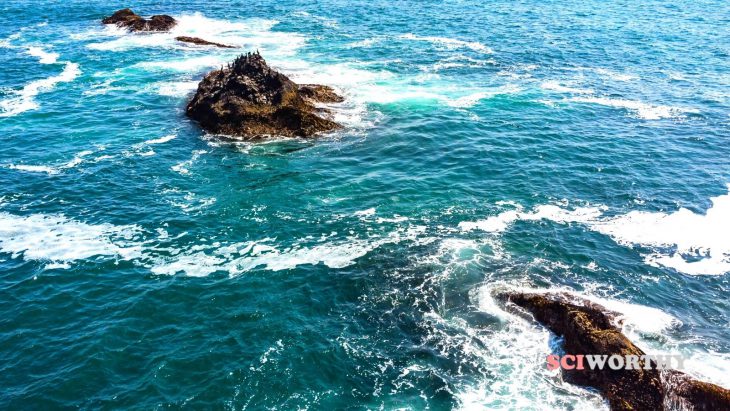It’s no secret that humans have their eyes on the Red Planet. Since the surface of Mars is really different from Earth, a lot of research is dedicated to trying to simulate or replicate Martian conditions either in laboratories or in extreme environmental sites on Earth called “Mars analogs.” While analog sites may not be exact replicas, they have characteristics similar in many ways to Mars. There are many of these types of sites on Earth. For example, some are in extreme deserts, both hot and cold, and some are at the bottom of the ocean.
A new ocean site has been identified in the Central Indian Ocean Basin (CIOB). It’s called a seamount, which is basically an underwater mountain. You may be wondering — is there water on Mars? Why would an underwater mountain be a Mars analog?
Today, Mars has a very dry, desert-like surface. However, scientists hypothesize that Mars was once watery like Earth in the past. Martian geological time can be divided into three eras, namely the Noachian, Hesperian and Amazonian. Each of these eras actually spans millions of years. The Noachian period was the wettest of the three, the Hesperian was moderately wet, and the Amazonian period of today is it’s driest.
It is not fully known why the water on Mars’ surface dried up, but many experts hypothesize that water still exists beneath the surface. Thus the CIOB seamount actually replicates situations that might have existed during Noachian or Hesperian watery Mars. But, the watery aspect is not the only reason this site is a good Mars analog.
To determine if this site would be a suitable Mars analog, the researchers looked at its geological conditions in the past and present. Among these conditions include the chemistry of the water, the composition of rocks and minerals, the microbes that exist there, and how these microbes survive on the food sources available.
Fully describing this new seamount site as a Noachian-Hesparian analog of Mars was possible through collaborative research between scientists at the National Institute of Oceanography (NIO), Goa,India, the Agharkar Research Institute (ARI), Pune, India and the Physical Research Laboratory (PRL), Ahmedabad, India. Experiments were conducted in these laboratories. The data generated at NIO was further examined by the alumni researcher while she was working at the University of Ryukus, Japan, along with the corresponding author and all other co-authors working in India.
The team wanted to understand as much as they could about the geology, biology, chemistry and microbiology of this seamount, and they published the results in a recent paper. The authors proposed that the seamount is similar to Mount Sharp, located on a large crater on Mars called the Gale Crater.
In the red clay of the seamount, the researchers found communities of microbes that use a chemical thiosulfate (S2O32-) from their environment for their energy supply. The characteristics of the seamount and its red clays were found to be similar in many ways to less powerful types of vent systems called white smokers. The microbes absorb carbon dioxide in this dark environment, just like what plants do in light.
Because there was almost no ‘food’ readily available, the microbes ‘eat’ rocks and minerals for energy. These minerals include iron, sulfur, phosphorus, and many others. Scientists call these microbes chemolithotrophs. This word literally means “chemical and rock eaters,” because chemo- means chemical, litho- means rocks, and trophs- means eaters. These types of strange microbial behaviours are needed for their survival in extreme environments where oxygen and food are very limited or unavailable.
Sulfur and sulfate mineral deposits are common on Earth and Mars. However, time and mechanisms by which they were formed on the two planets are very different. On Mars, they formed continuously during one era. On Earth, they formed intermittently during multiple eras. The CIOB seamount area is covered in red clays and is rich in iron oxide and many other minerals. Sulfur is also oxidized mostly by the help of sulfur-oxidizing microbes or thiosulfate oxidizing microbes.
If the seamount red clays of this new Mars analog are indeed a geochemical replica of Noachian processes, the microbes active in them are a representative component of the Noachian past too. In nature, some transformations of sulfur are not possible without the active participation of microbes. This means if we found these sulfur deposits on Mars, it would be an indicator that Mars once had microbial life on it millions of years ago.


